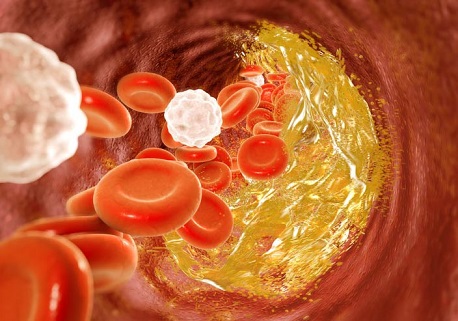Nikhil Prasad Fact checked by:Thailand Medical News Team Aug 26, 2024 1 year, 2 months, 3 weeks, 5 days, 12 hours, 32 minutes ago
Medical News: Australian researchers from the Raymond Purves Bone and Joint Research Laboratory at the Kolling Institute-NSW, Arthropharm Australia Pharmaceuticals, University of New South Wales and the University of Sydney have shed light on the profound impacts of COVID-19 on the endothelial glycocalyx, a crucial protective barrier in our blood vessels. This
Medical News report delves into their findings, highlighting the vital role this barrier plays in health and disease, especially in the context of COVID-19.
 Australian study uncovers COVID-19’s impact on the endothelial glycocalyx
The Endothelial Glycocalyx: A Vital Protective Barrier
Australian study uncovers COVID-19’s impact on the endothelial glycocalyx
The Endothelial Glycocalyx: A Vital Protective Barrier
The endothelial glycocalyx is a complex and highly hydrated meshwork of proteins, glycoproteins, and glycosaminoglycans that lines the surface of our blood vessels. This structure serves as a critical barrier, regulating vascular permeability, blood flow, and protecting the endothelial cells from damage. When functioning normally, the glycocalyx prevents the binding of circulating leukocytes, reduces inflammation, and maintains the delicate balance necessary for vascular health.
COVID-19’s Assault on the Glycocalyx
The study highlights that during COVID-19 infection, the endothelial glycocalyx is severely compromised. The virus induces a cascade of inflammatory responses that lead to the degradation of this protective layer. The researchers found that the glycocalyx, especially the heparan sulfate proteoglycans (HSPGs), are particularly susceptible to this damage. This degradation not only increases vascular permeability but also enhances the risk of thrombosis - a dangerous condition where blood clots form within blood vessels, potentially leading to strokes, heart attacks, or pulmonary embolisms.
Understanding the Mechanisms of Damage
One of the key findings in the study is the role of the cytokine storm in exacerbating the degradation of the glycocalyx. This storm, characterized by the excessive release of pro-inflammatory cytokines such as TNF-α and IL-6, leads to the activation of various enzymes, including matrix metalloproteases (MMPs), which break down the glycocalyx. The loss of this barrier function results in increased endothelial cell apoptosis (programmed cell death), reduced nitric oxide production, and heightened oxidative stress - all contributing to the severe vascular complications observed in COVID-19 patients.
The Protective Role of Hyaluronan
Hyaluronan, a key component of the glycocalyx, plays a significant role in maintaining its structural integrity and protective functions. In the healthy state, hyaluronan contributes to the anti-inflammatory and anti-coagulant properties of the glycocalyx. However, during COVID-19 infection, hyaluronan undergoes depolymerization, breaking down into smaller fragments that are pro-inflammatory and contribute to further glycocalyx degradation.
The study also highlights the importance of other proteoglycans, such as syndecans and glypicans, in mai
ntaining the glycocalyx’s protective functions. These molecules are involved in sensing mechanical forces like blood flow, which is critical for the regulation of endothelial cell function. In COVID-19, abnormal blood flow due to vascular damage further exacerbates the dysfunction of these protective molecules.
Therapeutic Implications: Restoring the Glycocalyx
Given the central role of the glycocalyx in vascular health, restoring its function presents a promising therapeutic avenue for treating COVID-19 and its complications. The researchers emphasize the potential of glycosaminoglycan (GAG) mimetics, which are synthetic molecules designed to replicate the protective functions of natural GAGs like heparan sulfate. These mimetics could potentially restore the integrity of the glycocalyx, reduce inflammation, and prevent thrombosis.
Moreover, the study suggests that therapies aimed at reducing the cytokine storm, such as the use of TNF-α inhibitors or IL-6 blockers, could help protect the glycocalyx from degradation. Additionally, maintaining endothelial nitric oxide synthase (eNOS) activity through the use of nitric oxide donors or enhancers could further support the regeneration and maintenance of the glycocalyx.
A New Perspective on COVID-19 Treatment
This article underscores the importance of the endothelial glycocalyx in the pathology of COVID-19. By focusing on this critical structure, researchers are opening new pathways for treatment that go beyond just addressing the symptoms of the virus. Targeting the endothelial glycocalyx not only offers a potential means to reduce the severity of COVID-19 but also provides a broader strategy for combating other vascular diseases that may arise from endothelial dysfunction.
Conclusion
The findings from the study underscore the critical importance of the endothelial glycocalyx in maintaining vascular health. COVID-19’s impact on this protective barrier highlights the need for targeted therapies that can restore its function and prevent the severe complications associated with the virus. As the understanding of the glycocalyx continues to grow, it is likely to become a focal point in the development of new treatments for a wide range of vascular diseases.
The study findings were published in the peer-reviewed journal: Journal of Cellular and Molecular Medicine.
https://onlinelibrary.wiley.com/doi/10.1111/jcmm.70033
For the latest COVID-19 News, keep on logging to Thailand
Medical News.
Read Also:
https://www.thailandmedical.news/news/covid-19-induced-endothelial-dysfunction-will-lead-to-a-pandemic-of-chronic-kidney-and-cardiovascular-diseases
https://www.thailandmedical.news/news/herbs-and-phytochemicals-saponins-from-chinese-garlic-attenuates-endothelial-inflammation-and-acute-lung-injury-via-nf-kb-vcam-1-pathway
